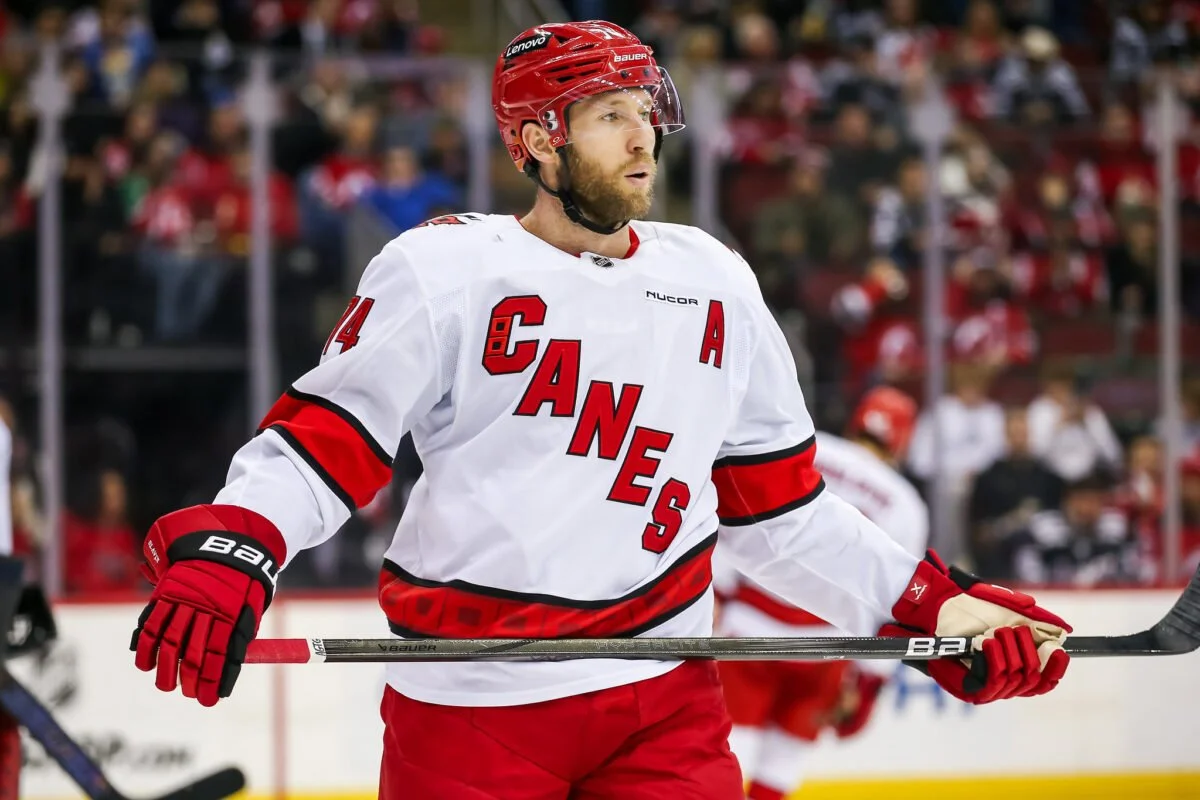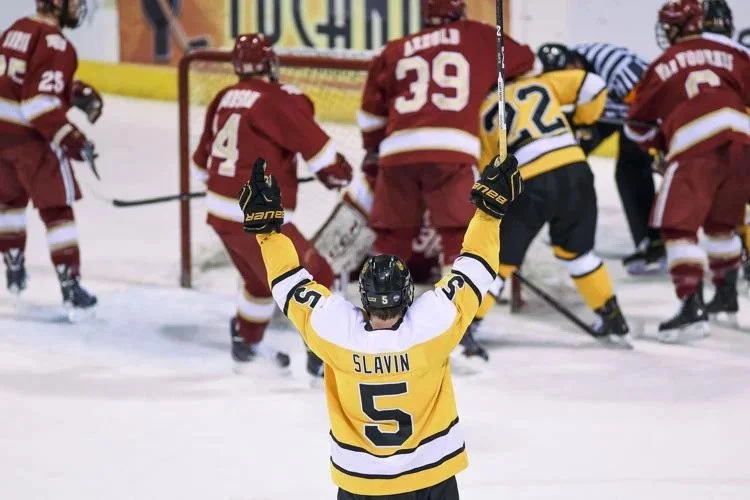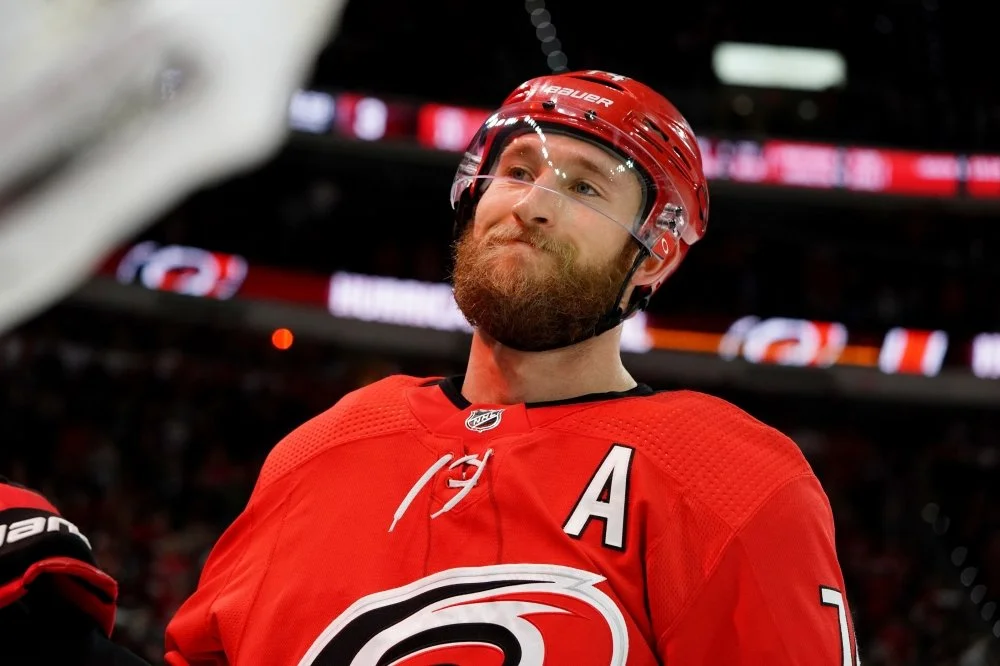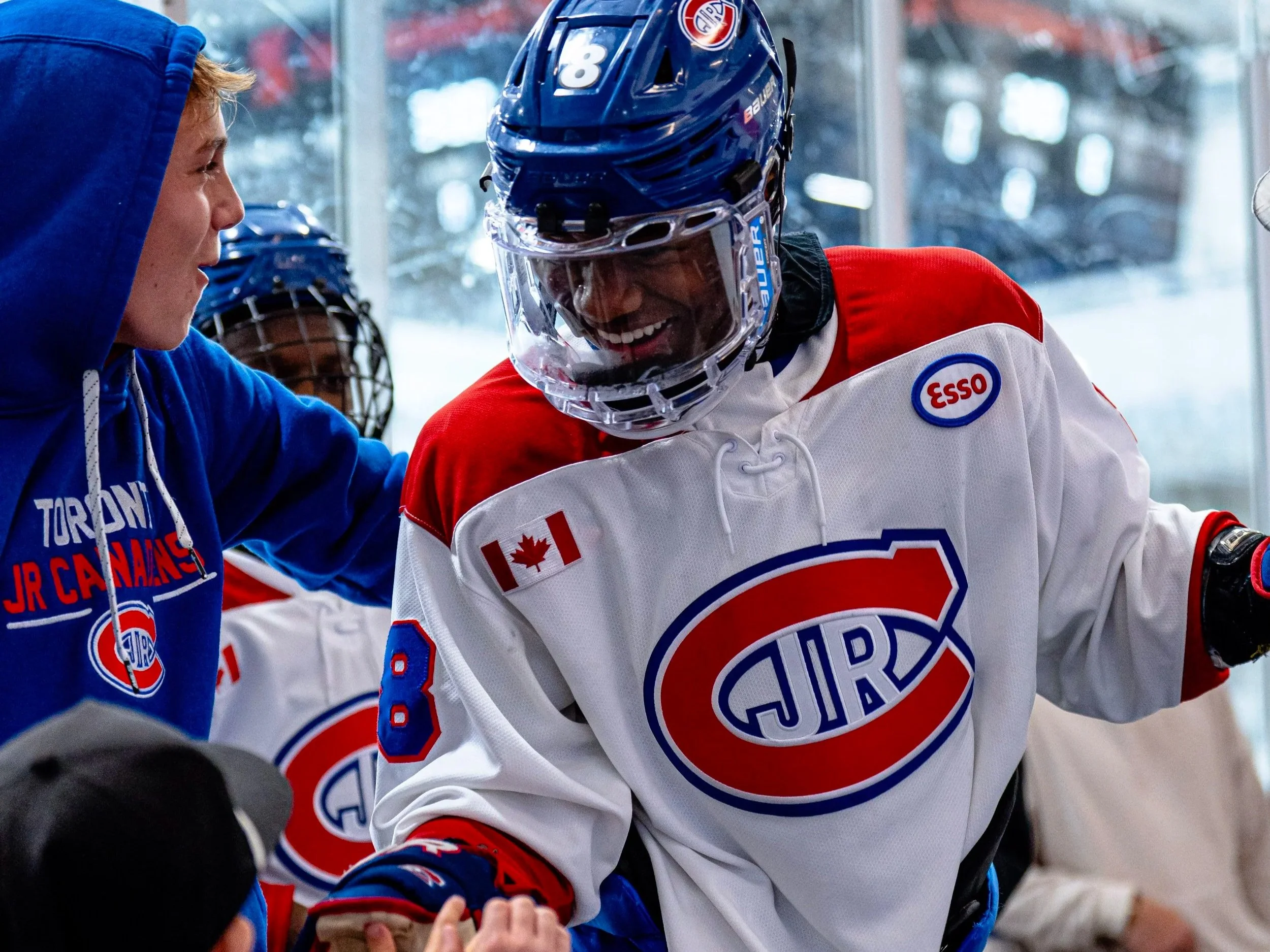The PDA Newsletter | Jaccob Slavin Case Study
“Master of the Margins”
What if the smallest habits became your biggest advantage?
There’s nothing flashy about how Jaccob Slavin plays.
No big open ice hits.
No dramatic end-to-end rushes.
No spotlight from media coverage.
Yet when NHL coaches are asked who they trust most with a defensive assignment, his name always surfaces.
Quietly. Consistently. With full respect.
Slavin isn’t just dependable, he’s a walking manual for how to play defence.
Every shift is a study in positioning, patience, and precision.
He teaches the game without speaking a word.
Let’s see what we can learn from Slavin…
Where It All Began
Long before he was shutting down NHL superstars, Jaccob Slavin was mastering simplicity in his own backyard.
Raised in Colorado, he played within programs that emphasized structure and discipline, environments where effort and awareness mattered just as much as scoring goals.
At Colorado College (NCAA), those habits became refined tools.
Under coaches who valued defensive detail, Slavin learned to control space instead of chase it.
He developed the ability to read rushes, manage his feet, and dictate the ice defensively through positioning and timing rather than aggression or brute force.
He studied video obsessively, analyzing how elite defenders managed positioning and pressure.
By the end of his second college season, he was trusted in every situation, praised for calm decisions that made the game easier for everyone around him.
When the Carolina Hurricanes drafted him 120th overall in 2012, they weren’t getting a finished product; they were getting a blueprint.
His foundation of composure, timing, and anticipation was already built, ready to scale to the NHL level…
The Smartest Stick In Hockey
What began as defensive discipline in Colorado has become one of the NHL’s most precise skill sets.
Slavin’s game starts with his stick, and few can match it.
He kills plays before they start: intercepting lanes, deflecting passes, and stripping pucks without breaking stride.
Watch him on a routine 2-on-1…
He waits, reads, and reaches, and the danger disappears.
“He’s got the best stick in the league,” said former teammate Dougie Hamilton. “It’s unbelievable how often he breaks things up just by being in the right place.”
Every movement is deliberate.
Angles, posture, and timing blend into a rhythm that rarely breaks form.
His stick isn’t reactive; it’s predictive.
A quiet weapon built through years of repetition and awareness.
The Anchor of a Contender
For nearly a decade, Slavin has been the defensive heartbeat of one of the NHL’s most consistent teams.
Since breaking into the league in 2015, the Carolina Hurricanes have evolved into a perennial Eastern Conference contender, built on structure, pace, and a hard-nosed brand of hockey.
That identity mirrors their top defenseman.
Slavin’s calm reads and clean exits form the backbone of Carolina’s transition game, allowing their forwards to attack off recovered pucks instead of chaos.
His ability to neutralize top players night after night gives the Hurricanes control over matchups and momentum.
Teammates call him a quiet hero, the player who makes their jobs easier without needing recognition. Coaches and upper management call him irreplaceable.
His decisions ripple through every zone: when he wins a battle cleanly, Carolina is instantly back on the attack.
In an era driven by offence, Slavin has helped the Hurricanes win through balance.
Their success over the last eight seasons, division titles, deep playoff runs, and one of the NHL’s lowest goals-against rates is built on the habits he embodies: composure, control, and consistency.
And though Carolina hasn’t returned to the Stanley Cup Final since their 2006 championship, Slavin keeps them in the conversation every year, the quiet constant who makes them a threat to go deep every spring.
The Player He’s Become
Years later, that same foundation has made him one of the NHL’s most respected defensemen, a player every coach trusts and every forward hates to face.
Alternate captain with the Hurricanes
Logs 20+ minutes a night, every season
Two-time Lady Byng Trophy winner for excellence and discipline
Regularly matched against top offensive lines
Widely regarded as one of the league’s smartest and most efficient defenders
Member of Team USA’s stacked blueline
What Players Can Learn From Slavin
1. Master the Game of Inches.
Stick detail, body angle, and timing can win more battles than speed or strength.
The players who master inches control outcomes, because hockey is often decided long before the puck reaches the net.
2. Think Calm, Play Fast.
Processing early creates time. Slavin’s reads turn pressure into patience.
His calm doesn’t slow the game down; it allows him to see it one step ahead.
3. Build Habits That Travel.
Repetition and clarity hold up under pressure. His game is proof.
Strong habits don’t fade in chaos; they anchor consistency when everything speeds up.
4. Lead Without Volume.
He leads through steadiness, a tone every locker room trusts.
His composure sets the standard for how Carolina plays: confident, organized, and unshaken when games tighten.
Concluding Thoughts
Jaccob Slavin plays with quiet confidence.
He takes the hardest matchups and still makes them look effortless.
His structure steadies Carolina’s system, and his discipline turns risk into reliability.
Nothing about his game demands attention, but everything about it defines how winning defence should look.
Actionable Advice
What’s one invisible habit that could separate you from everyone else?
For Slavin, his brilliance wasn’t accidentally discovered; it was carefully developed with purpose and direction.
He built it through quiet study, daily repetition, and years of doing small things with full intention.
The smallest details made him one of the NHL’s most trusted players.
And they can do the same for you.
Talon Mills
Up next in the PDA Newsletter
Coming this Thursday: Titans Tournament Recap
This Thursday in the PDA Newsletter, we’re recapping the Titans Tournament, the first big measuring stick of the season. We’ll look back on how it unfolded, who impressed, and what early trends are starting to take shape across the U16 landscape.







